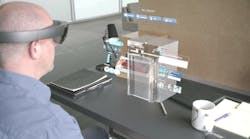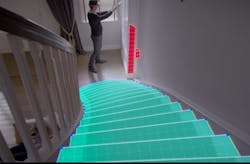Frank Bauman would have never thought the fictional electronic spectacles (aka Character Markers) he imagined in the illustrated novel The Master Key would be a reality someday. These glasses would let wearers see letters on the foreheads of people, indicating their character. Good people would bear the letter “G,” evil ones the letter “E,” and so on, letting wearers immediately know the true nature of all the people they encounter.
Though still firmly in the realm of fiction, developments in augmented reality (AR) are bringing this sci-fi device closer to reality. AR today connects the computer and physical worlds with human experience, opening possibilities that can further blur the lines between virtual reality and reality.
However, AR is still seen as a technology best suited for the gaming industry, and we can blame Pokémon GO for this common notion. Given the recent developments in the industrial Internet of Things (IIoT), AR actually has great potential for revolutionizing the manufacturing sector. In fact, AR completes the entire digital ecosystem as a part of Industry 4.0. It connects workers with equipment, letting them interact with sensor data to identify exact components that need maintenance, replacement, or upgrading.
Some of the global leaders in manufacturing are taking the lead in tapping the potential of this technology. thyssenkrupp, a leader in elevator manufacturing, already uses AR to guide workers during maintenance using Microsoft HoloLens, a self-contained, wearable holographic computer.
The smart glasses let workers inspect the elevator virtually before going to the site. Once there, they can quickly identify components that need replacement or maintenance. They can also instantly access tutorial videos or talk to trainers in real-time for assistance. The company also uses AR to measure stairs and capture digital point-cloud data needed for quickly designing and manufacturing stairlifts.
Developing lightweight 3D CAD models for AR is one area seeing significant activity. Native 3D CAD models are large and represent actual products to be manufactured, including all of the nuts and bolts. However, the detailed native CAD product model is not fit for AR visualization. For AR purposes, the models need to load quickly. And that is why re-modeling or a conversion process is needed. Although part of this conversion can be automated through AR publishing tools, it still takes a manual effort to ensure the details required in the AR environment aren’t compromised.
Another area of interest is the effort to speed the spread of AR across large and small companies that develop, manufacture, and service products by developing guidelines or standards. For example, UI Labs in Chicago teamed up with Augmented Reality for Enterprise Alliance (AREA) in Wakefield, Mass., to draft the first AR hardware and software functional requirement guidelines. This effort is backed by more than 65 organizations—including manufacturers, AR providers, universities, and government agencies—all of whom offer insights and address their respective needs to further develop the guidelines.
These documents will serve as a benchmark and give everyone involved in AR a shared understanding and language. For enterprises, AR requirements will encourage interoperability, make RFPs easier to create, and provide a clear understanding of what is required. For AR providers, the requirements clarify what enterprises need for successful AR project, which can then be used to influence development roadmaps and future product launches.
The requirements covering hardware will address battery life, connectivity, field of view, on-board operating systems and memory, recommended inputs and outputs, as well as environmental and safety concerns. Those covering software will look at authoring and creating AR and 3-D content, deploying AR content, and the IoT.
These documents will be developed and expanded through workshops and collaboration to develop AR offerings that meet the needs of real-world manufacturing.


